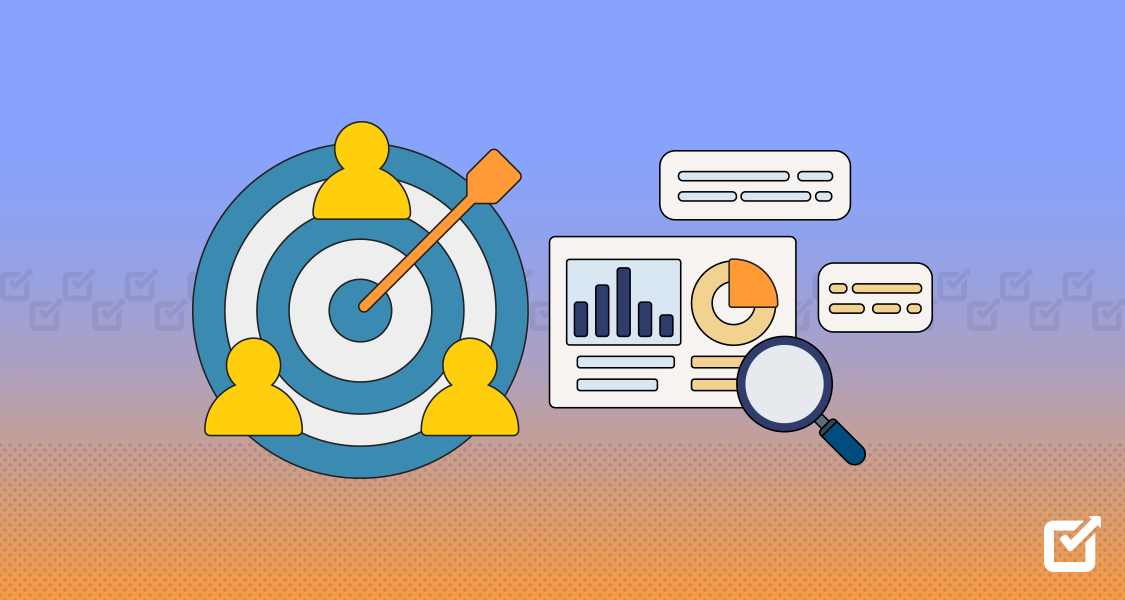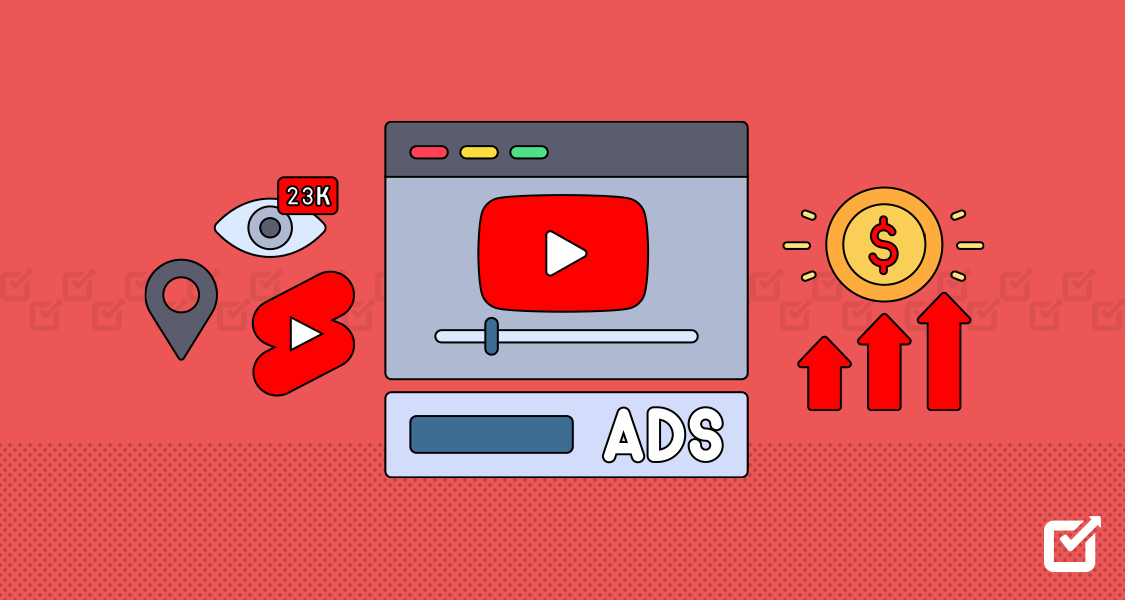As we start 2024, how we find and connect with people has changed a lot. In a time of tough competition and changing trends, understanding your customers can help your business stay on the right path.
Knowing your customers well—who they are, what they want, and how they act—is not just helpful but important. This is what we call selecting a target market.
Trying to appeal to every customer can spread resources too thin and dilute messaging, making marketing efforts less effective. Whereas, segmenting the market allows for tailored messaging and focus on the most profitable or receptive customer groups.
So, if you’re interested in discovering your target market, continue reading. This guide will tell you everything you need to know to create a targeted customer segment. But before we start, here’s a little tip: Get a social media analytics tool to keep track of your targeted marketing campaigns.
What Is A Target Market?
A target market is a group of people to whom a company wants to sell its products or services. This group is chosen based on factors like age, gender, interest, demographics, income, and behavior. Knowing the target market’s meaning is necessary for businesses.
For example, imagine a company that sells fancy handbags. This company might want to sell its bags to women between 30 and 50 who have a lot of money to spend, are interested in fashion, and live in big cities. This group of women is its target market.
Choosing a target market is very important when a company is planning how to sell its products or services. It helps the company use its time and money wisely and create products, messages, and offers that this group of people will really like. This way, the people are more likely to buy from the company and become loyal customers.
Understanding the meaning of a target market also proves beneficial when developing new products. It makes sure that what you’re selling matches what these people need and want. It can also help decide how much to charge for a product, where to sell it, and how to advertise it so that it appeals to this group.
Do You Know What Your Customers Want?
Leverage Social Champ’s analytics to see how your customers engage with your brand on social media.
What Is Target Market Segmentation?
Target market segmentation is like splitting a large group of potential customers into smaller groups with similar likes, needs, or characteristics.
Imagine you’re at a concert with a large crowd. Everyone there loves music, but they might like different types of music, follow different artists, or prefer different merchandise. If the concert organizers understand these differences, they can improve the concert experience. They could sell special merchandise for fans of each artist, set up food stalls that sell the most popular food, or even create separate areas for fans of different music genres.
Businesses use target marketing segmentation in a similar way. They divide their potential customers into smaller groups based on things like age (teenagers, adults, senior citizens), fashion style (casual, formal, sporty), or how they shop (online shoppers, in-store shoppers, people who love discounts). Then, they can create products, advertisements, or shopping experiences that are just right for each group.
This also helps businesses better communicate with their customers. Instead of sending the same message to everyone, brands can create messages that each group will find more exciting and relevant. This can make their advertising more effective and help them connect with their customers better.
What Is Demographics and Why It Is Important?
Demographics is a term that describes certain details about a group of people. It’s like taking a quick picture that shows us things like how old they are, whether they’re boys or girls, how much pocket money they have, what grade they’re in at school if their parents are together, and what work their parents do. This kind of information is really important for businesses when they’re trying to sell their products, like toys, clothes, or games.
Why is it so important? Well, it helps businesses understand who might be interested in buying their stuff and what these people like or care about. For example, a company that makes skateboards would want to know about kids who are into outdoor activities and adventure, not those who prefer reading books at home.
By understanding this, businesses can make better decisions. They can create products, offer services, and design advertisements that fit perfectly with what these people want or need. It’s like making sure the shoes fit just right – too big or too small, and no one will want to wear them!
When businesses get this right, they have a higher chance of convincing these people to buy their stuff. This can lead to happier customers, more items sold, and a successful growing business. So, you see, demographics is a powerful tool that helps businesses hit the bullseye in the game of sales and growth!
Related Article: Stay True to Your Brand: Conveying Values via Marketing
How to Define a Target Market
Defining your target market means being precise and personal. To find out who you should sell to, you need to first understand your brand. What problems does your product or service solve? Who needs these solutions?
Marketing experts often say that if you try to talk to everyone, you actually end up talking to no one.
Knowing exactly who you want to reach is very important.
Let’s take a look at how to find your target market!
Step 1: Research is Very Important
Before figuring out your target market, you need to know where to start looking. Entirely focusing on research will be the best thing you can do. Start by collecting data and information about the current market.
Get a Full Picture
When we talk about understanding an industry, it’s like trying to solve a big puzzle where each piece represents different groups of people. These groups are often defined by their age – think of terms you might have heard like Baby Boomers, Generation X, Millennials, and Generation Z. These are the “big four” groups that businesses focus on when trying to sell their products or services.
But age isn’t the only factor that matters. Businesses also need to consider other factors like how much money people have, their education level, and what kind of lifestyle they lead. For example, someone who earns a lot of money might be able to afford more expensive products than someone who earns less. Similarly, someone still in school might have different needs and wants than someone already working.
Analyze Your Competitors
Look at your competitors’ strategies. Who are they trying to reach, and how? What are they doing well or not so well? Learning from their wins and mistakes can give you beneficial information.
Customer Surveys
You can also create or buy surveys and share them among different groups. This firsthand data can show you what your potential customers really want.
Social Listening
Use different tools to monitor social media. What are people saying about your industry or products online? Identifying famous words and feelings can help you understand the thoughts and wishes of your market.
Step 2: Dividing Your Target Market
Finding different groups within your market is very important. Grouping customers based on their traits allows you to better focus your marketing.
Basic Demographics
Age, gender, how much money they make, and education are simple but can be very useful in understanding customer buying behavior.
Places
Where do your customers live? In a city, countryside, or suburbs? Do you market to local customers or are you selling to individuals across the country or globe? This information can help you localize your marketing campaigns.

A snapshot of Social Champ’s target market by places Interests and Lifestyle
This involves determining interests, attitudes, and lifestyle choices. Are your customers quick to try new things, or do they like sticking to what they know?
Behavior
What are they looking for? What kind of product use is common among your customers? Do they buy often, or only once in a while?
Step 3: Making Buyer Personas
Buyer personas are fictional characters who represent your perfect target customers based on market research and real data about your current customers. They help create a specific point of reference for different groups within your market.
Name and Background
Who is this person? Give them a name and background story covering their personal, educational, or professional role.
Basic Demographic Information
Describe their age, gender, how much money they make, and education.
Goals and Problems
What are their primary goals concerning the products or services you offer? What problems might they face in achieving those goals?
What Drives and Worries Them
What drives them to buy something, and what are their main concerns?
Favorite Ways to Communicate
Where do they get their information? Are they more likely to be reached through social media, online blogs, or traditional marketing?
Step 4: Test and Refine
Once you have your initial personas, it’s time to test the waters. Launch targeted marketing campaigns and observe the response.
A/B Testing
Use A/B testing to try different messaging, channel approaches, and value propositions for each persona. What resonates better with each group?
Data Analysis
Continue to gather data from these tests. Are there any unexpected insights? What are the trends in purchasing behavior?
Customer Feedback
Always listen to customer feedback. It’s incredibly telling and can lead to sudden shifts in your personas or help in identifying new ones.
Step 5: Aligning Your Business With Your Target Market
The final step is to ensure that all aspects of your business, from product development to sales, are focused on effectively serving your target market.
Product Development
Does your offering align with the needs and preferences of your target market? If not, how can it be adjusted?
Pricing Strategy
Your price point should be acceptable to your target market while also providing the perceived value they are seeking.
Promotion
Are your marketing messages clear and resonant with your target market personas?
Place/Distribution
Are your products accessible to your target market? Are they using the appropriate channels to reach them?
Customer Experience
The customer’s end-to-end experience with your brand should meet their expectations every step of the way.
Figuring out your target audience is not a one-time task; it’s a continuous process that changes as your business gets bigger and the market changes. It is the well-informed main support of any successful business plan.
Related Article: Social Media for Business: Reshape Your Marketing Strategies in 2024
Top Target Market Strategies
With 2024’s target marketing getting even more crowded, a strategic approach is necessary. Here are some top strategies to employ:
Niche Marketing
Niche Marketing lets you carve out a specific, high-interest segment within the broader market. By focusing on their unique needs and wants, you can tailor messaging and offerings directly to this smaller yet highly engaged audience. This laser focus leads to increased conversion rates and lets you build strong brand loyalty in a saturated market.
Differentiated Marketing
While niche marketing caters to a specific segment, differentiated marketing allows you to target multiple segments within your broader market. This strategy involves tailoring your approach to each segment, acknowledging their unique needs and preferences.
You can effectively reach a wider audience through differentiated messaging, product variations, and targeted marketing channels while maintaining a solid brand identity.
This approach can help you expand your customer base, increase brand awareness, and cater to your market’s broader needs.
Digital Persona Development
One of the first steps in target marketing is understanding your ideal customers. With the help of artificial intelligence (AI) and big data, you can create detailed digital personas that represent these customers. These personas can include age, location, interests, shopping habits, and more information. By understanding these personas, you can tailor your products, services, and messages to meet their specific needs and preferences.
Target Market Examples
Here are some stellar examples of brands that have successfully captured their target markets:
Nike
Nike is a global brand that appeals to those who lead an active lifestyle and are determined to overcome their limits. The brand’s target audience is athletes and anyone who identifies with the ‘just do it’ attitude. This includes people who are bold, driven, and always ready to take on new challenges.
Nike has built its brand around this target market. Every aspect of its business, from product development to marketing, is designed to connect with these individuals. Here’s how:
- Product Development
Nike’s products are designed for people who lead active lifestyles. They offer a wide range of sports shoes, clothing, and equipment that support different kinds of physical activities, from running and basketball to yoga and dance. Nike’s products are known for their quality, performance, and style, which resonate with their target market’s needs and preferences.

- Marketing Strategy
Nike’s marketing strategy is all about inspiring and empowering their target market. Their ads often feature stories of determination and triumph, showcasing athletes and everyday people who embody the ‘just do it’s spirit. They also collaborate with influential athletes and celebrities who share the same values, reinforcing their brand image and appeal.
- Brand Experience
Nike creates a brand experience that aligns with their target market’s active lifestyle. This includes interactive stores where customers can try out products, fitness apps that help users track their progress, and events like races and training sessions that bring the ‘just do it’ community together.
Nike’s success lies in its deep understanding of its target market. It knows what its customers want, needs, and aspire to become, and it delivers this through its products, marketing, and brand experiences. This prime example of effective target marketing is showing how understanding your audience can drive business growth and brand loyalty.
Spotify
Your music guide, Spotify, is a master in making a unique music experience for each listener. It uses smart tech to give you playlists and song suggestions that fit your taste. This way, Spotify connects with all kinds of music fans, each with their favorite genres and artists.
Through machine learning, Spotify studies your listening habits. It knows what songs you play the most, what artists you prefer, and even what music mood you’re in at different times of the day. Using this info, it makes playlists just for you. These can be daily mixes, discovery playlists, or even playlists based on your recent listens.
But Spotify doesn’t stop there. It also has features like “Blend” to create a shared playlist with a friend. It combines both of your music tastes into one playlist.
And for those who want to discover new music, Spotify’s smart tech suggests new songs and artists based on what you already like.
Starbucks
Starbucks has firmly established itself as a sanctuary for people seeking a ‘third place’ – a comfortable spot that’s neither home nor work but somewhere in between. This concept caters to those who crave a relaxed environment to unwind, work, socialize, or simply enjoy a cup of coffee. Starbucks has effectively captured this unique market segment through its welcoming atmosphere and personalized beverage options.

A snapshot of Starbuck’s audience demographics - Creating the Perfect Atmosphere
Starbucks’ stores are designed to feel like a ‘home away from home.’ From comfortable seating arrangements to soothing music, every element is carefully curated to create a warm, inviting ambiance. Consistent store design across locations adds a sense of familiarity and comfort for regular customers, making them feel at ease no matter which Starbucks they walk into.
- Offering Customizable Drink Options
Starbucks’ extensive menu is another key aspect that appeals to ‘third-place seekers.’ There’s something for everyone, from their signature espresso-based drinks to seasonal specials. What makes Starbucks stand out, however, is its customization level. This gives each customer a unique Starbucks experience, further enhancing the brand’s appeal.
Starbucks has successfully targeted the ‘Third Place Seekers’ by creating a distinct, personalized experience beyond just serving coffee. They’ve made their stores a destination where customers can relax, meet friends, work, or simply enjoy a moment – truly a ‘third place’ between work and home.
Apple
Apple has skillfully won the hearts of tech enthusiasts. Those who love the newest technology, stylish design, and top quality have found their perfect match in Apple. With its high-quality products, one-of-a-kind store experiences, and superior customer service, Apple has effectively reached this specific group and gained its loyalty.
- Groundbreaking Products that Shine
Apple’s charm is rooted in its groundbreaking, top-tier products. Every product showcases Apple’s dedication to innovation, design brilliance, and extraordinary performance, from the famous iPhone to the robust MacBook. These traits deeply connect with tech lovers always seeking the latest and greatest in technology.
- One-of-a-Kind Store Experiences
Apple Stores go beyond being just shops where customers can buy devices; they are interactive spaces where customers can explore and experience Apple’s products. The minimalist design of the stores highlights the products and the chance to try the gadgets firsthand. This appeals to tech-savvy shoppers who value a hands-on experience before purchasing.
Apple has effectively engaged the tech-savvy market by offering more than just products. It provides an experience – a chance to discover and enjoy top-tier technology, a sense of belonging to an exclusive community, and the promise of reliable customer support. It’s no surprise that Apple has reached its target audience and secured its enduring loyalty.
How Can You Identify Your Target Audience?
Finding out your target market is really important when you’re starting a business. Here are some easy steps to help you identify your target customers:
- Know Your Product or Service: Firstly, understand what you’re selling and what problem it can solve. This will help you understand who needs or wants what you’re selling.
- Look at Your Current Customers: Pay attention to who buys from you. What do they have in common? This can help you to identify your target market.
- Look at Your Competition: Find out who your competitors are selling to. Is there a group of people they might be missing? You could sell to those people.
- Break Down Your Market: Divide your market into smaller groups based on things like age, gender, how much money they make, where they live, or what they like to do.
- Do Some Research: Use surveys, interviews, and focus groups to learn more about who might be in your target market. You can also use online tools, like Google Analytics and social media, to learn more about these people.
- Check and Change if Needed: Once you’ve figured out how to find your target market, double-check if it’s right. Is this group big enough to keep your business going? Can they afford what you’re selling? If you still need to change your target market, you might need to change your target market.
Take Away
Knowing who you want to sell your products or services to is crucial for your business to do well. This isn’t something you do just once. It’s something you keep doing as your business grows and as the market changes.
You can identify your target market by breaking your market into smaller groups, creating detailed descriptions of your ideal customers, and constantly improving your research. This way, you can learn how to find your target market. Always remember that understanding your target market well can help your business grow and make more money.

















